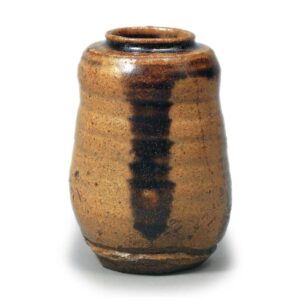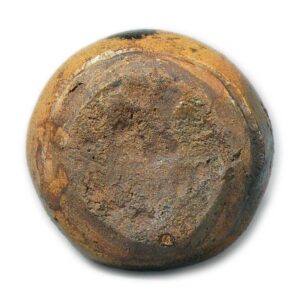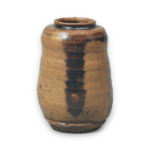

Height 8.6 cm, mouth diameter 3.2 cm, bottom diameter 3.9 cm
Hatakeyama Memorial Hall
Karatsu ware was born as a tea ceremony ware, but it was not until around 1603 (Keicho 8) that it began to appear in the Momoyama period (1603-1604), when it was used by Oribe Furuta. The number of Oribe’s favorites, such as water jars, tea bowls, and vases, tells us that there were few tea containers produced during this period, compared to those produced in Mino and Seto. Among them, this “Shigawa” is considered to be the best of all Karatsu tea caddies since ancient times.
It is a tea caddy with a broad base, a low raised mouth, a raised carving around the base, a glazed body in the color of decayed leaves, a black glaze from the mouth to the shoulder, and a thick streak of glaze running down the body, all of which create a beautifully designed scene favored by the tea masters. The inscription on the front of the lid of the inner box and the inscription on the back of the lid, “Omohigawa nare ni nakarenakare ni kare ni watase magpie no hashi” were written by Enshu Kobori, a famous tea master. It was later published in “Unshu Meibutsuki” by Matsudaira Fumai, and is also included in “Taisho Meikikan” (Taisho Meikikan: A Guide to Meikiki).








